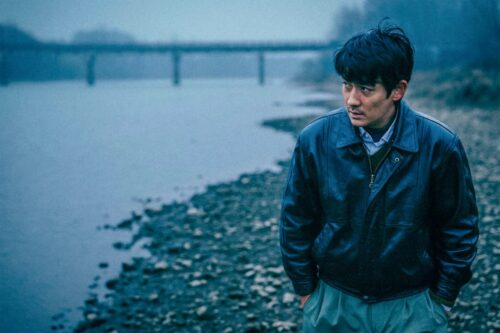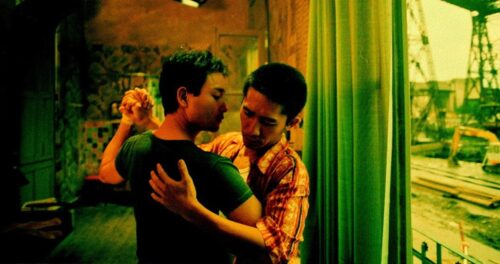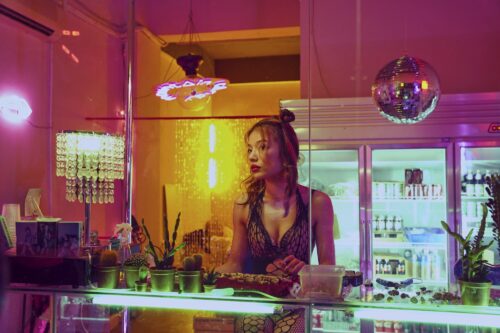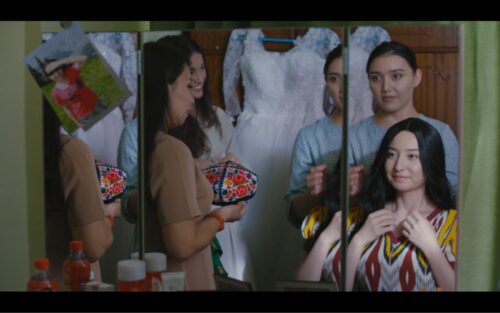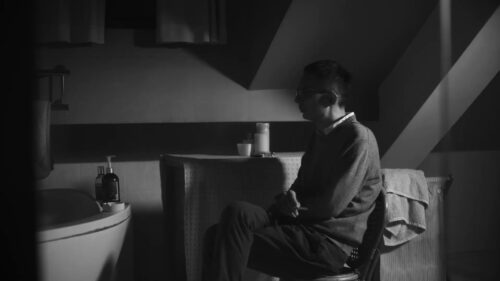5 ghost movies inspired by the stories of Pu Songling
Pu Songling's works involving demons, ghosts, and other creatures of the night have provided inspiration for Chinese filmmakers since the dawn of cinema. In celebration of Pu's influence on film, and with Halloween happening tomorrow, here are five worthwhile movies adapted from his work.
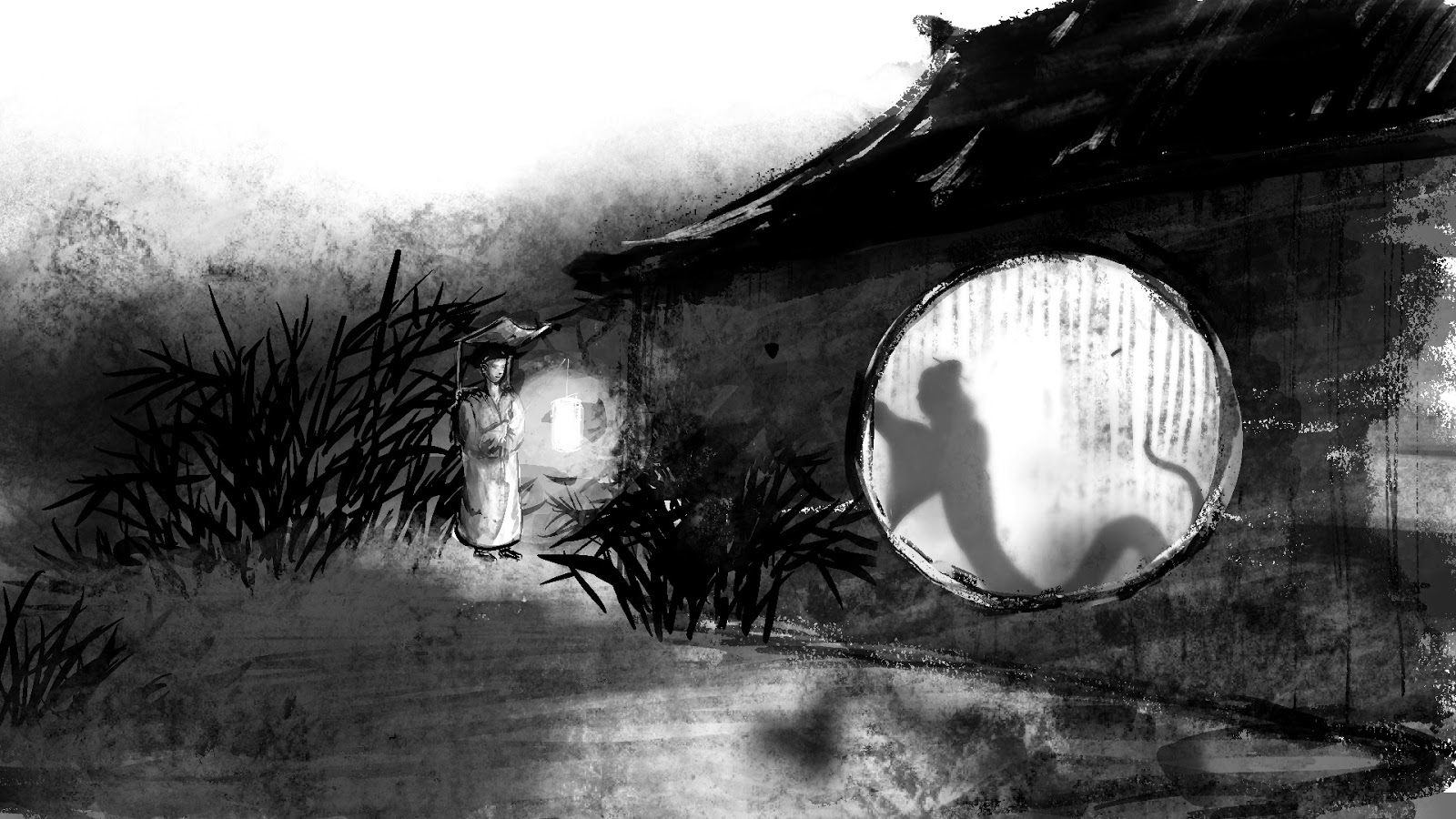
Although obscure and unsuccessful in his own lifetime, Pú Sōnglíng 蒲松龄 has become a giant in Chinese literature. Pu’s work, featuring demons, ghosts, and other things that go bump in the night, used the supernatural to criticize society and impart moral lessons to his readers. His collection of strange and supernatural stories, the Liáozhāi Zhìyì 聊斋志异 (known in English as Strange Stories from a Chinese Studio, and available here via Project Gutenberg) created a sensation when it was printed posthumously in 1766, nearly 50 years after Pu’s death.
The Liaozhai Zhiyi includes more than 500 stories, many of them only a few pages long in English translation. But while the tales are short, they’re rich in their imagination and matter-of-fact style. Since the dawn of cinema, filmmakers in the Chinese-speaking world have looked to Pu and his tales for inspiration, adapting them into movies, TV shows, and cartoons. (Occasionally, like in Jackie Chan’s unintentionally horrific The Knight of Shadows: Between Yin and Yang 神探蒲松龄之兰若仙踪 [shéntàn púsōng líng zhī lánrě xiān zōng], the author appears as a character himself.) In celebration of Pu’s influence on film, and with Halloween happening tomorrow, here are five worthwhile movies adapted from his work.

1. Fairy, Ghost, Vixen (聊斋志异 liáo zhāi zhì yì) (1965)
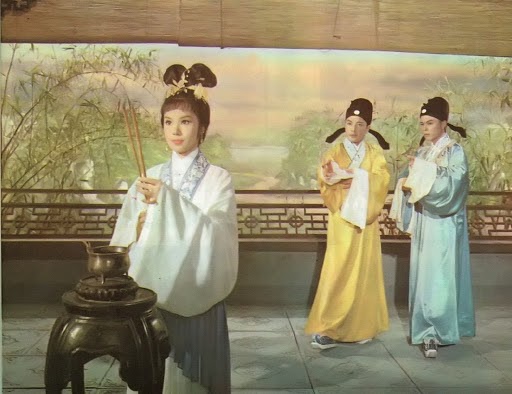
It might not have been the first movie fashioned from a Pu tale, but Shaw Brothers Studio stumbled on a treasure trove when they brought Pu’s love story Niè Xiǎoqiàn 聂小倩 to the silver screen as The Enchanting Shadow (倩女幽魂 qiànnǚ yōuhún) in 1960. After the success of this gorgeous, gothic romance, Hong Kong filmmakers were eager to raid the rest of the Liaozhai Zhiyi for material. Director Táng Huáng 唐煌 was especially enthusiastic. With Fairy, Ghost, Vixen, he began a trilogy of Pu anthologies that in Chinese were all released under the same title of Liaozhai Zhiyi.
While we often associate Pu with the horror genre, Fairy, Ghost, Vixen focuses on the lighter fantasy side of his work. The three stories alluded to in the English title are all love stories, and instead of scaring the audience, each segment features a kind of moral lesson. The lovers of the opening, Fox Harmony (狐谐 Hú Xié), are a scholar and a woman who’s actually a fox spirit. In the second, a man discovers that his bride is a ghost, while the final segment concerns a spirit whose human lover might not have the same feelings in return.
Light on special effects, and heavy on colorful costumes and musical numbers, Fairy, Ghost, Vixen is a wonderfully-staged melodrama. It won’t make you hide behind the couch, but if you like your spirits to be beautiful and classy, then you’d do well to check out this and Tang’s other Pu anthologies.
https://www.youtube.com/watch?v=14bo3z8Q0A8
2. A Touch of Zen (侠女 xiá nǚ) (1971)
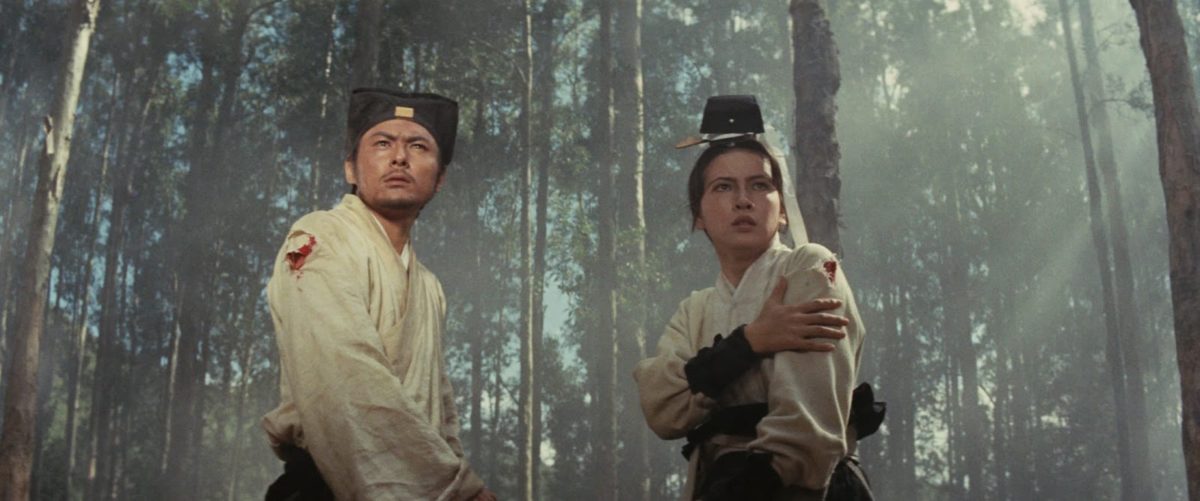
More than anyone before or since, director King Hu (胡金铨 Hú Jīnquán) turned wuxia into an artform, with his intricate action scenes and evocation of Buddhist themes. The genius behind classics like Dragon Inn (龙门客栈 lóngmén kèzhàn) and A Touch of Zen, Hu was also a huge fan of Pu Songling. Not only is the latter based on a Pu story, but Hu was actually an assistant director on The Enchanting Shadow. He also had a hand in the Pu-inspired anthology Four Moods (喜怒哀乐 xǐ nù āi yuè), and would later direct three other movies inspired by the horror master: Raining in the Mountain (空山灵雨 kōng shān líng yǔ) (1979), Legend of the Mountain (山中傳奇 shān zhōng chuánqí) (1979), and Painted Skin (画皮之阴阳法王 huàpí zhī yīnyáng fǎwáng) (1993).
For A Touch of Zen, Hu drew on the story Xiá Nǚ 侠女, expanding the slight sketch into a three-hour epic set in the 14th century. Pu’s original follows a man named Gu, a poor painter who lives with his mother. Next to the family is an abandoned house, which is eventually occupied by a pretty girl and an old woman. It’s easy to solve the mystery of Gu’s mysterious neighbors, but in Hu’s version, the initial story is a prologue that leads into something bigger.
The mysterious girl becomes the character Yang, a fugitive being hunted by the Eastern Depot, a real-life secret police force controlled by court eunuchs. Over the course of the film, Gu teams up with Yang, fights the Eastern Depo, and experiences a spiritual awakening that challenges everything he’s done. A Touch of Zen is legendary for its action cinematography, most notably its sword fight in a bamboo forest. In creating a Zen-spirited action movie, King Hu came up with the most ambitious and beautiful Pu adaptation yet.
Where to watch: The Criterion Channel.

3. All in the Dim Cold Night (秋燈夜雨 qiū dēng yè yǔ) (1974)
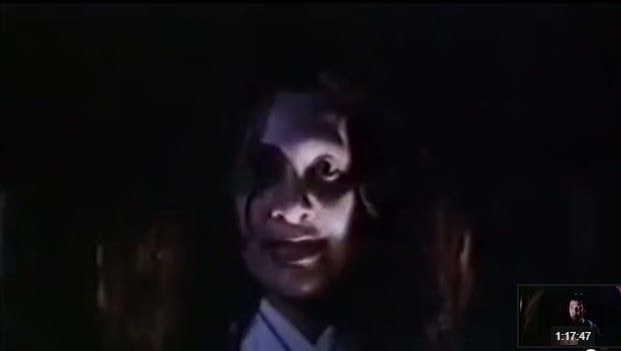
Once nicknamed the “King of Ghost Films” in the 1970s, Taiwan’s Yao Feng-Pan (姚凤磐 Yáo Fèngpán) has become so neglected that his movies were nearly lost for good before a Hong Kong TV company rescued them. Yao, a journalist-turned-filmmaker, made all sorts of horror-tinged fare, including costume dramas, comedies, and stories based on true crime cases. All in the Dim Cold Night, Yao’s first in a series of Pu adaptations, was his major breakthrough.
The Pu source, The Dou Clan (窦氏 dòu shì), is about a landlord who promises to marry a farmer’s daughter in exchange for sleeping with her. The deal is broken, and even after giving birth to a baby boy, the girl and her son die due to the landlord’s carelessness. Despite some supernatural shenanigans, the story ends soberly: the landlord is sentenced to death by a magistrate. For his rendition, Yao kept most of the structure of The Dou Clan, but amplified the body count, drama, and ghosts.
By modern standards, All in the Dim Cold Night suffers from overacting and a ridiculous addiction to zooming, that bygone technique where the camera might do a closeup on an actor’s face before quickly zooming out onto the wider scene. Yao had a remarkable talent for atmosphere and staging, however, so that the film glows with eerie color, thick smoke, and authentic sets. The movie’s antiheroine is also much more satisfying than her literary source, as she shrieks, floats, and murders her way into taking revenge with her own green-hued hands.
4. A Chinese Ghost Story (倩女幽魂 qiànnǚ yōuhún) (1987)
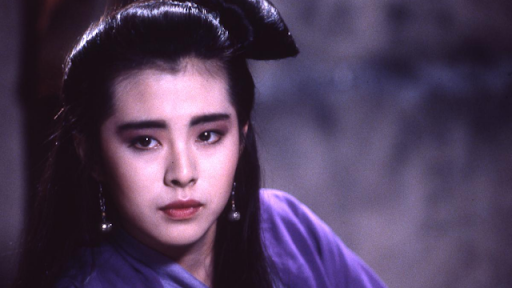
One of the reasons the Liaozhai Zhiyi has been so endlessly adapted is because of the simplicity of the texts themselves. Since Pu was generally vague, filmmakers can run wild with bringing his work to screen, offering very different interpretations on the same story. The previously mentioned Nie Xiaoqian is a perfect example. While director Li Han-hsiang (李翰祥 Lǐ Hànxiáng) envisioned it as the minimalist, slow-burn The Enchanting Shadow, producer Tsui Hark (徐克 Xú Kè) and director Ching Siu-Tong (程小东 Chéng Xiǎodōng) took it in the polar opposite direction.
The result, A Chinese Ghost Story, is fast, lively, and full of crazy special effects. In this classic horror-comedy, a debt collector named Ning spends the night in an old temple, where he meets the beautiful Nip Siu-sin (or Nie Xiaoqian in Mandarin). Ning learns that Siu-sin is a ghost, and she can’t rest until her soul is freed by her master, a cannibal demon tree. Setting out to save her, Ning and a Daoist priest will have to fight evil spirits and brave the underworld to put Siu-sin to rest.
A Chinese Ghost Story is pure genre-bending spectacle, an impressive blend of humor, action, horror, and touching romance. The special effects, including a slithering tongue that breaks trees, are some of the most delightful you’ll see in a Hong Kong movie. Ching and Hark would later release two sequels, but for Pu purists, these are more a continuation of A Chinese Ghost Story than anything having to do with the Liaozhai Zhiyi.
Where to watch: Amazon Video.

5. The Painted Skin (画皮 huà pí) (2008)
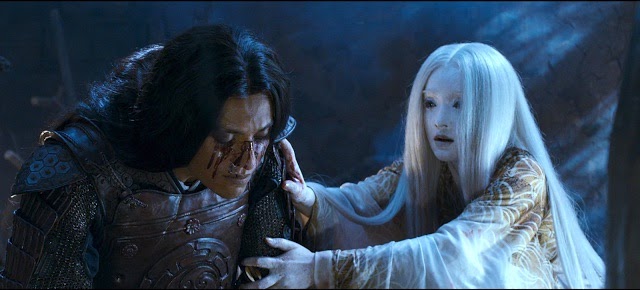
Perhaps Pu’s best-known story, The Painted Skin is a hair-raising tale about a heart-eating demon who wears a mask made from human skin. Hong Kong director Bao Feng (鲍方 Bào Fāng) released a film version in 1966, an adaptation that was quite popular when it was screened in mainland China in the years after the Cultural Revolution. By the late ’70s, Bao’s adaptation was tame by Hong Kong standards, but mainland audiences unaccustomed to horror movies thought it was terrifying. At the time, there were rumors that some viewers were scared to death, and that a mainland version was produced and banned for its unadulterated horror.
The rumors are dubious, but a testament to the impact it had on mainland fans. When a new version was released in 2008, starring Donnie Yen (甄子丹 Zhēn Zidān) and Zhōu Xùn 周迅, the film set a box office record for the time, grossing 100 million yuan ($15 million) in less than a week. But while the original was a horror flick, the new Painted Skin has a bigger emphasis on action and romance. The setting is moved to ancient China, and Pu’s typical jerkish scholar Wang is turned into a handsome general. After a daring battle with bandits, Wang meets Xiaowei, a fox spirit who falls madly in love with him. Wang brings Xiaowei home with him, but his wife is suspicious, especially as a spree of unsolved murders break out immediately afterward.
Painted Skin plays around so much with its source material that it’s practically unrecognizable, save for the mandatory scene where Xiaowei removes her human skin. There are now two love triangles, an additional demon, and some sleek, CGI effects. It might not be faithful, but it’s a lot of fun, a compliment that can’t be paid for its dull 2012 sequel.
Where to watch: Amazon Video.

